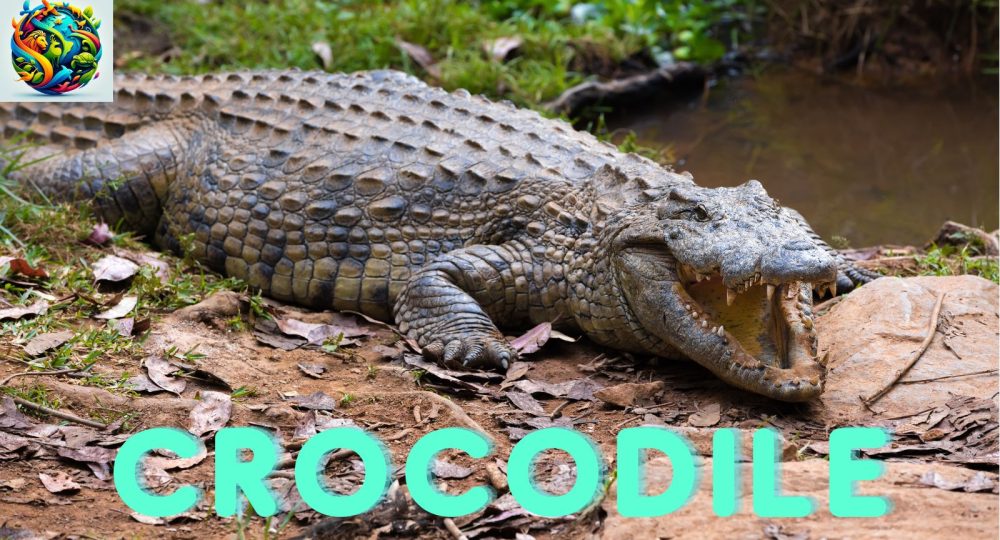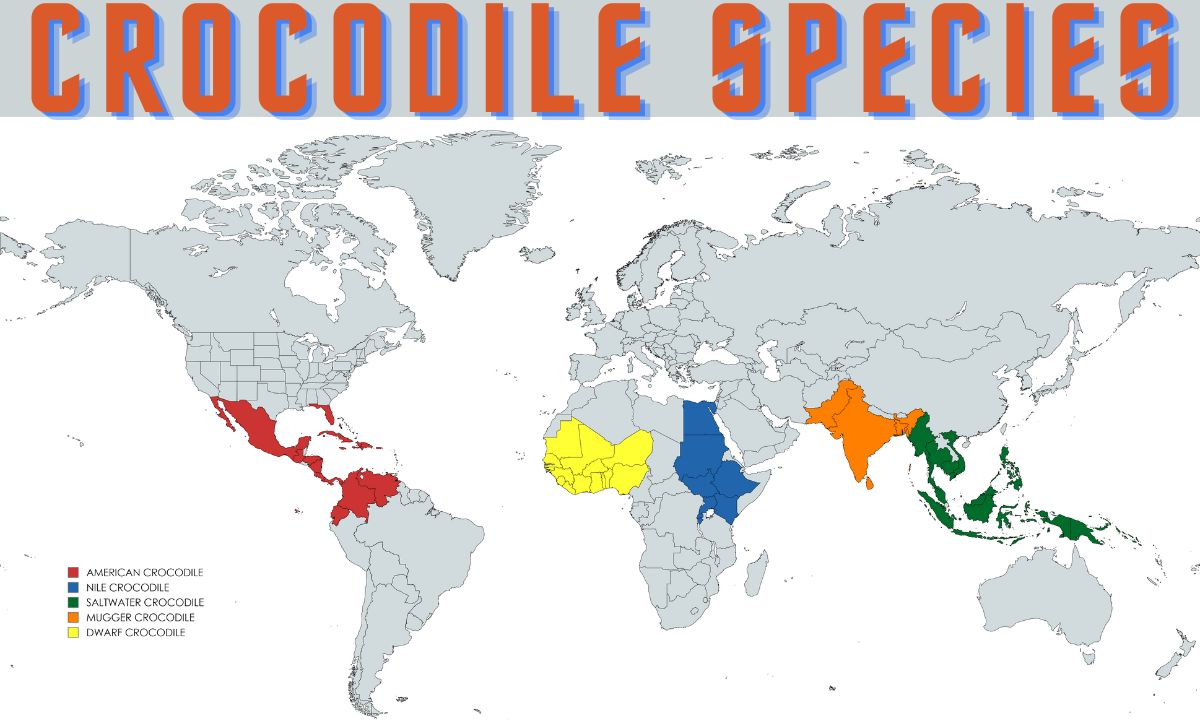
Nile Crocodile: Africa’s Formidable Predator
Nile Crocodile: Africa’s Formidable Predator
The Nile Crocodile (Crocodylus niloticus) is one of nature’s most awe-inspiring predators, embodying the wild essence of Africa’s rivers and wetlands. This ancient reptile, with its formidable size and power, has fascinated and terrified humans for centuries. Yet, beyond its fearsome demeanor lies a complex creature, an essential component of its ecosystem that requires our understanding and respect for its continued survival. This article delves into the life of the Nile Crocodile, shedding light on its ecological importance, the challenges it faces, and the conservation efforts that are pivotal to its future.
The Nile Crocodile: An Ancient Predator
Physical Characteristics
The Nile Crocodile is among the largest crocodile species, with adults commonly reaching lengths of up to 5 meters (16 feet) and, in some cases, even exceeding that. Their robust bodies, armored with bony scales and equipped with powerful jaws capable of exerting tremendous force, make them adept hunters. The distinctive features of the Nile Crocodile, such as its olive-green color and the V-shaped snout filled with sharp teeth, are not just for intimidation but are adaptations that have enabled it to thrive for millions of years.
Evolutionary Journey
Surviving virtually unchanged for millions of years, the Nile Crocodile is a living link to the prehistoric past. Its evolutionary success can be attributed to its adaptability and versatility as a predator. The species has witnessed the rise and fall of civilizations along the Nile, embedding itself into the cultural and ecological fabric of Africa. This remarkable resilience speaks to the crocodile’s ability to navigate the challenges of changing climates and habitats.
Habitat and Distribution
Geographic Range
The Nile Crocodile’s distribution spans much of Sub-Saharan Africa, thriving in its rivers, freshwater marshes, and lakes. This extensive range is a testament to the species’ adaptability, allowing it to dominate a variety of aquatic environments. The Nile River, from which the crocodile gets its name, remains one of its most iconic habitats, but its presence in other water bodies across the continent highlights the crocodile’s critical role in diverse African ecosystems.
Preferred Habitats: Rivers, Lakes, and Marshlands
Nile Crocodiles favor calm, freshwater environments where they can find ample food and suitable nesting sites. These habitats not only provide the necessary resources for their survival but also play a crucial role in the reproductive cycle of the species. The selection of nesting sites near water bodies ensures the safety and development of their offspring, illustrating the intricate relationship between the crocodile and its environment.

Dwarf Crocodile American Crocodile Mugger Crocodile Saltwater Crocodile
Diet and Hunting Techniques
What Does the Nile Crocodile Eat?
The diet of the Nile Crocodile is as varied as the ecosystems it inhabits, including fish, birds, and mammals that come to the water’s edge to drink. This opportunistic feeding behavior underscores the crocodile’s role as a keystone predator, helping to maintain the balance of the ecosystem by controlling the population of these species. The crocodile’s ability to take down large prey such as wildebeest and ZEBRA during river crossings highlights its power and strategic hunting skills.
Ambush Predators: Techniques and Tactics
Nile Crocodiles are masterful ambush predators, relying on stealth and strength to capture their prey. They can remain submerged and undetected for long periods, striking with lightning speed to drag their prey underwater. This hunting method not only demonstrates the crocodile’s physical prowess but also its patience and precision, traits that have been honed over millennia.
Reproduction and Lifecycle
Mating Rituals
The mating season of the Nile Crocodile is a time of heightened activity, characterized by intense competition among males for the right to mate with females. This period is marked by displays of dominance, such as loud bellows and aggressive posturing. Females lay their eggs in carefully constructed nests on riverbanks, where temperature plays a crucial role in determining the sex of the offspring, showcasing the intricate balance of nature.
Nesting Habits and Hatchling Survival
The survival journey of Nile Crocodile hatchlings begins with the perilous trek from nest to water, where they face numerous predators. Mother crocodiles exhibit remarkable maternal instincts, often guarding their nests against threats and sometimes assisting their young in reaching the water. This early stage is critical for the survival of the species, highlighting the challenges and vulnerabilities of even the most formidable predators.
Conservation Status
Threats to Their Survival
Despite their dominance as apex predators, Nile Crocodiles face significant threats from habitat loss, pollution, and human conflict. The encroachment of human activity into their natural habitats has led to a decrease in suitable nesting sites and prey availability, posing a challenge to their survival. Additionally, the illegal skin trade has historically decimated populations in some areas, though conservation efforts have begun to reverse this trend.
Current Conservation Efforts
Conservation initiatives aimed at protecting the Nile Crocodile have shown promise, with legal protections and habitat restoration efforts helping to stabilize and, in some areas, increase populations. These efforts, coupled with community engagement and education, are crucial for ensuring the coexistence of humans and crocodiles. By safeguarding their habitats and regulating hunting, we can preserve the ecological balance that the Nile Crocodile helps to maintain.
Human-Crocodile Conflict
Historical Context
The relationship between humans and Nile Crocodiles is complex, marked by reverence, fear, and conflict. In ancient Egypt, crocodiles were worshiped as deities and feared as monsters, a duality that reflects the species’ impact on human cultures throughout history. Today, the challenge lies in mitigating conflicts that arise from the overlap of human and crocodile habitats, necessitating solutions that protect both parties.
Mitigating Conflicts and Promoting Safety
Efforts to mitigate human-crocodile conflicts include the establishment of crocodile management programs and the creation of awareness campaigns to educate local communities about crocodile behavior and safety precautions. By fostering a better understanding and respect for these ancient predators, we can reduce conflicts and promote a harmonious coexistence.
Conclusion
The Nile Crocodile remains one of Africa’s most iconic and misunderstood predators. Its survival is not only a testament to the resilience of the species but also a reminder of the importance of conservation efforts to protect the delicate balance of Africa’s ecosystems. As we continue to study and understand the Nile Crocodile, we uncover the vital role it plays in the health and diversity of its habitat. Through continued conservation and education, we can ensure that future generations will have the opportunity to marvel at these ancient predators, just as we do today.





